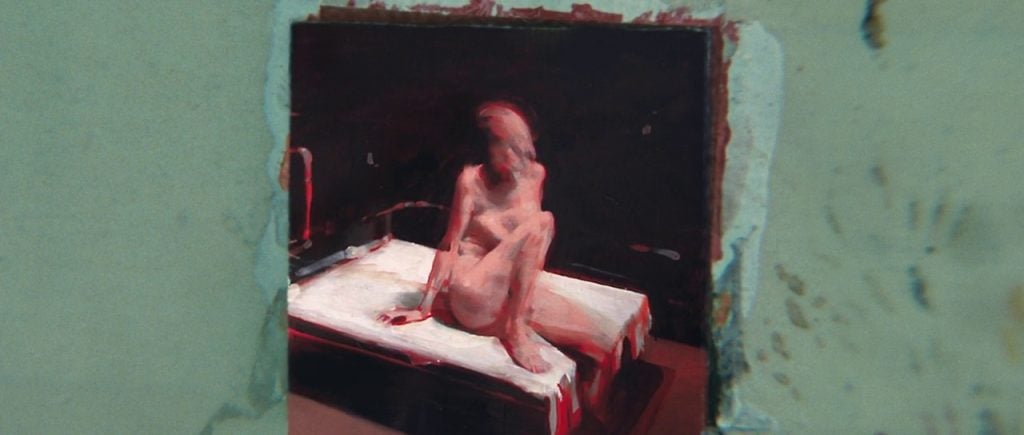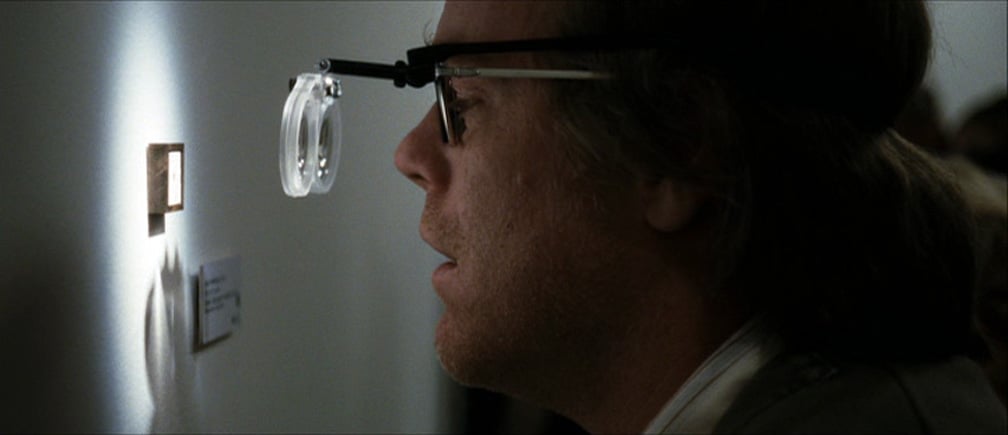Pop Culture
As Seen on ‘Synecdoche, New York’: The Tiniest Paintings Ever
The paperclip-sized paintings were created by artist Alex Kanevsky.

Being John Malkovich and Eternal Sunshine of the Spotless Mind screenwriter Charlie Kaufman’s 2008 directorial debut Synecdoche, New York follows a marital conflict between two artists living in the sleepy upstate town of Schenectady. Neurotic theater director Caden Cotard (played by Philip Seymour Hoffman) watches his life fall apart when wife Adele (Catherine Keener), who paints miniature paintings, leaves with daughter Olive in tow, relocating to Germany.
Every little narrative and visual detail in Synecdoche, New York relates to the film’s overarching themes, and Adele’s artwork is no exception. Created by the Russia-born, Lithuania-educated, and America-based painter Alex Kanevsky, the tiny paintings often depict Adele’s lovers in a blurry, Impressionist style, echoing what is communicated by the film’s increasingly surreal plot: that nothing is what it seems, and that we can never truly know another person beyond our superficial assumptions of them.

Still from Synecdoche, New York (2008), featuring one of Adele’s miniature paintings. Photo: Screen grab.
Adele’s penny-sized paintings contrast with Caden’s creative output. Awarded a McArthur Genius Grant after their separation, the heartbroken director decides to stage a play about his own life in the most meta way possible. Wanting it to be as true to life as possible, he not only hires an actor to play himself, but also an actor to play the actor playing him, and so on. By the end of the movie, the project has become so impossibly expansive that Caden dies of old age before he can actually stage it.
“If you look at the progression of Adele’s work in the movie, it gets smaller and smaller. In her studio at the beginning of the movie you can see some small but regular-sized paintings that you could see without a magnifying glass,” said Kaufman in 2008. “As a dream image it appeals to me. Her work is in a way much more effective than Caden’s work. Caden’s goal in his attempt to do his sprawling theater piece is to impress Adele because he feels so lacking next to her in terms of his work.”

Phillip Seymour Hoffman in Synecdoche, New York (2008). Photo: Screen grab.
Adele does better for herself. After spending years putting her mini artwork inside tiny crates and shipping it to smalltime galleries across the United States, she readily finds critical and commercial success in Berlin, landing at some point on the cover of Elle magazine. She even opens a solo show at the Metropolitan Museum of Art, complete with art-speak wall text that reads: “The only art I ever saw was the smear of coal dust on my father’s shirts, but that was enough to stimulate my fascination with the idea of markings on fabric, traces of the real world left to linger as memory.”
Adele was also the subject of an IRL installation at Montalbán Gallery in L.A. in 2008, tied to the film’s release. It directly referenced her on-screen Met show with its title, as well as the series on view, “Women I Love.” As in the film, visitors had to view the works through magnifying glasses.
As Seen On explores the paintings and sculptures that have made it to the big and small screens—from a Bond villain’s heisted canvas to the Sopranos’ taste for Renaissance artworks. More than just set decor, these visual works play pivotal roles in on-screen narratives, when not stealing the show.





